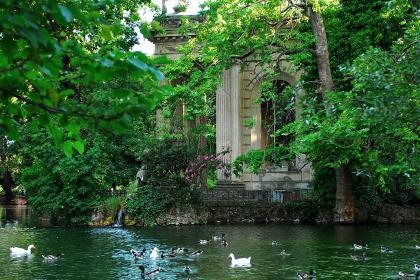






A few steps away from the terrace of the Pincio, one of the most evocative panoramic viewpoints of Rome, stands the Aurelian Obelisk or Antinous Obelisk. It takes its name from the young Greek loved by Emperor Hadrian and prematurely drowned in the Nile in ever-clear circumstances.
Hadrian deified Antinous; in Egypt, he erected temples and even a city called Antinopolis dedicated to him. In Rome, the temple devoted to the young man had the obelisk as an ornament. The hieroglyphics that cover it commemorate the tragic events and Antinous' life.
A great lover of Egyptian art, of which he had collected notable examples in his villa at Tivoli, Hadrian ordered its transport to Rome.
In 300, the obelisk was transported to the Circo Variano, near the basilica of Santa Croce in Gerusalemme, where it fell, breaking into three pieces. In 1589, it was found there, and for the proximity to the Aurelian Walls, it was called Aurelian.
From that moment, it passed through various properties and was transported to different places; among these, we can mention the courtyard of Palazzo Barberini, where it moved in 1633, but without being raised.
In the second half of the 18th century, the Vatican acquired it. Pope Clement XIV erected it in the courtyard of the Pigna.
Only in August 1822, by order of Pope Pius VII, as part of the work for the complete reorganization of the Pincio area and the public promenade conducted by Giuseppe Valadier, did it reach its final location in via dell'Obelisco.
Carved in pink granite, the Obelisk of Antinous is over 9 meters high; with the base and the star on top, it reaches 17.26 meters.
The Pincio terrace and promenade

 Condividi
Condividi
Villa Borghese

 Condividi
Condividi
Agonale Obelisk

 Condividi
Condividi
Information
 Condividi
Condividi
Location
To find out about all accessibility services, visit the Rome accessible section.

















































